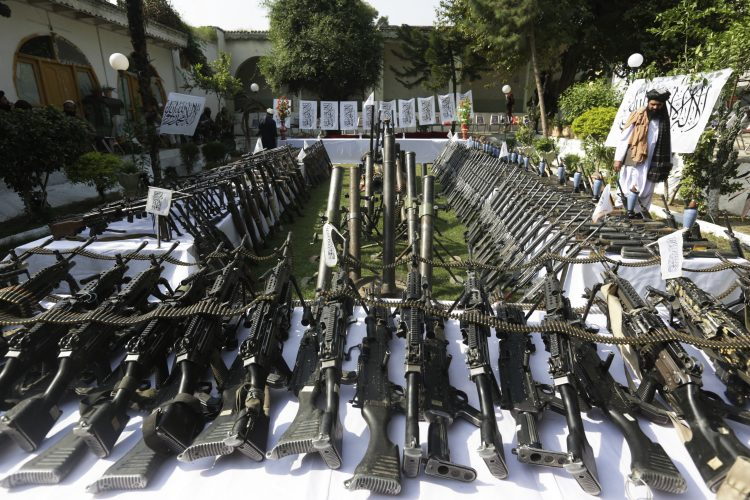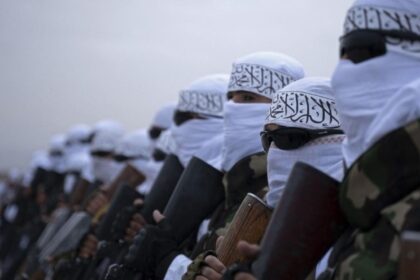RASC News Agency: The Taliban regime is facing renewed international scrutiny following reports that it has sold or illegally trafficked an estimated 500,000 U.S.-manufactured military weapons arsenals left behind during the hurried withdrawal of American forces from Afghanistan in 2021. The revelations have fueled intensifying fears over the resurgence of transnational terrorism, the strengthening of extremist networks, and the broader destabilization of the region. According to a report published by The Express Tribune on Saturday, April 19 citing a British media investigation these weapons, which once belonged to the Afghanistan National Defense and Security Forces (ANDSF), vanished from military stockpiles and strategic storage facilities immediately following the collapse of the former Afghan government and the Taliban’s rapid ascension to power.
The United Nations has corroborated key elements of this reporting in its latest security brief, confirming that a portion of these weapons has now been traced to militant groups affiliated with al-Qaeda, operating openly within Afghanistan. Analysts warn that the proliferation of such advanced weaponry ranging from assault rifles and sniper systems to night-vision gear and drone technology could significantly boost the operational capabilities of terrorist factions. Despite the Taliban’s categorical denial of the allegations claiming that all foreign-supplied military assets are being safely secured under their centralized command internal leaks and intelligence from within the regime suggest otherwise. Sources, including Taliban officials speaking on condition of anonymity, have admitted that the location and status of nearly half of the weapons remain unverified or unaccounted for.
Independent investigations by regional journalists and analysts indicate that Taliban commanders were informally permitted to retain up to 20 percent of the captured U.S. military equipment for their own use. This informal “privatization” of armaments has reportedly led to the emergence of a flourishing black market, particularly in southern provinces such as Kandahar, where illegal arms trade continues to thrive despite official denials. A local journalist based in Kandahar, speaking to RASC News, disclosed that American-made weapons including M4 carbines, M16 rifles, and tactical gear were openly sold in public markets for over a year following the Taliban takeover. While the sales have since gone underground, covert transactions are said to remain widespread, fueling an underground economy rooted in arms smuggling and militant financing.
Security experts have warned that these developments pose a serious and escalating threat not only to Afghanistan’s fragile internal stability but also to neighboring states and the broader region. “What we are witnessing is an unprecedented leakage of Western military hardware into the hands of jihadist networks,” said a regional counterterrorism analyst based in Central Asia. “This could erode the gains of two decades of global counterterrorism efforts and embolden non-state actors across the region.” Adding to the concern, multiple intelligence agencies have reported signs that some of these weapons have already crossed international borders, potentially arming militant factions in Pakistan, Central Asia, and even as far as the Middle East. The risk of spillover violence and the reactivation of cross-border insurgencies is becoming a central concern for neighboring governments and international security bodies.
The situation highlights the long-term consequences of the disorderly U.S. withdrawal from Afghanistan and the vacuum of accountability that has since emerged. Experts argue that, in the absence of robust monitoring mechanisms and international oversight, the Taliban’s stewardship over such vast quantities of advanced weaponry presents a global security dilemma. International organizations and human rights bodies are now calling for urgent action including independent verification missions, sanctions on black market arms routes, and intelligence cooperation to prevent further proliferation and mitigate the growing threat posed by terrorist rearmament.
With Afghanistan once again at the epicenter of regional insecurity, the world faces a critical question: Can the international community afford to ignore the consequences of this unchecked arms leakage, or will silence pave the way for a new era of extremist violence?






